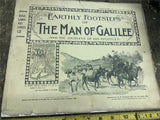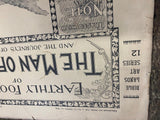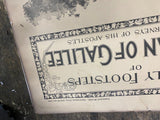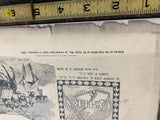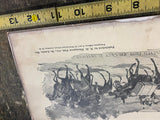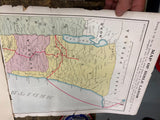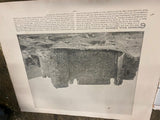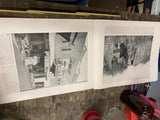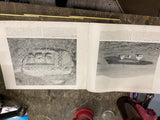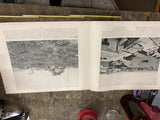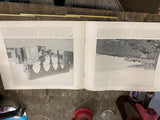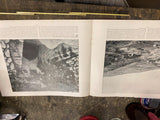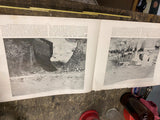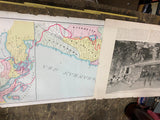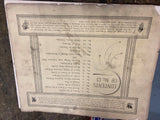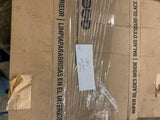1895 Art Drawings Book Drawings Man From Galilee Jesus Robert Bain Antique Lazarus tomb of some great history!! some info about booklet below
Robert E. M. Bain
The Tomb of Lazarus by the Chicago-born photographer Robert E. M. Bain (1858–1932), a Washington University graduate, depicts the site in the biblical village of Bethany near Jerusalem where Christ raised Lazarus from the dead, according to the Gospel of John. In 1894, Bain traveled to the Holy Land under the sponsorship of a St. Louis publishing house to gather material for Earthly Footsteps of the Man of Galilee, a book of nearly four hundred halftones with text by Bain’s travel companion, the biblical expert James W. Lee.[41] The structure of the book approximates the sequential narrative of Christ’s life, from before his birth to the crucifixion. By retracing his footsteps, it aimed to bring the reader closer to God and thus stem the era’s rising tide of secularism.
Robert E. M. Bain, The Tomb of Lazarus, 1894
In The Tomb of Lazarus, seven residents of the holy village cluster around the entrance to the deep vault. The shadowy cavity suggests a spiritual realm that cannot be seen by the camera, elevating the nondescript pile of stones into a focus for religious devotion. To the left, a mother and infant recall the religious iconography of the Madonna and Child and encode the domestic myth of Palestine as the “motherland” for American Christians. However, Bain also provides ethnographic commentary that implies the cultural inferiority of the local population to his Anglo-Protestant American audience. The mother’s semi-nudity and suckling baby place her within an ethnographic tradition of photographing “primitive, native” types.[42] The allusion to the Madonna suggests that the people of Palestine live in an unchanged, scriptural way. Relegating the contemporary inhabitants of Palestine to the biblical past downplayed the challenge their presence posed to the American expedition’s “possession” of the Holy Land. The text of Earthly Footsteps characterized Bain’s photography similarly, as a peaceable conquest of the region. To obtain the photographs, Lee wrote, it was necessary to “invade Palestine…not with fire and sword, after the style of the military captain, but with harmless scientific instruments.”[43] Here Lee specifically described photography as an empirical science in order to buttress the expedition’s religious mission, although scientific discoveries of the period, particularly Darwinian evolution, had produced tremendous doubt about the veracity of Christian faith.[44]
Although Bain clearly staged The Tomb of Lazarus, Lee emphasized the spontaneity of the pictures to guarantee their authenticity. He also stressed the strenuousness of the journey, especially for Bain’s delicate cargo of glass plates.[45] Lee told readers, “The most of our baggage was so fragile that every mile of the fifteen thousand in our contemplated journey was attended with peril…. These boxes [of photographic plates] had been carried from place to place by railway cars, by express wagons, by carriages, by steamboats, by row-boats, by porters.”[46] Bain’s decision to reproduce rather than retouch the break line running down the center of The Tomb of Lazarus, likely from a cracked glass negative, attests to this arduous firsthand experience. Photographs of the Holy Land were rarely ever touched up or even tinted. This hands-off approach preserved the avowed status of Holy Land photography as pure documentary and thus bestowed an aura of truth to the Bible.
selling as pictured.
more than welcome to pick up at shop in butler pa & save shipping.
070925 cg

















